Stereoscopic Photography at the Turn of the 19th and 20th Centuries from the Holdings of Zagreb City Museum
Exhibition concept: Slavko Šterk
Multimedia: Maja Šojat-Bikić, MSc
Exhibition design: Ivan Ružić
Poster design: Miljenko Gregl
 In the early 1890s and up to the end of World War I, Zagreb was enthralled by the recently invented stereoscopic photography which, in this relatively small town, had a solid foundation in the photographic work of Julius Hühn (executed only ten years after its invention in London). Through the graphic panorama staged by Eduard Kastiana, it became a mass medium. Every relatively affluent middle-class Zagreb family owned dozens of stereoscopic photographs that would be viewed in their living rooms in the company of friends as part of their Sunday afternoon entertainment and education.
In the early 1890s and up to the end of World War I, Zagreb was enthralled by the recently invented stereoscopic photography which, in this relatively small town, had a solid foundation in the photographic work of Julius Hühn (executed only ten years after its invention in London). Through the graphic panorama staged by Eduard Kastiana, it became a mass medium. Every relatively affluent middle-class Zagreb family owned dozens of stereoscopic photographs that would be viewed in their living rooms in the company of friends as part of their Sunday afternoon entertainment and education.
The photographers attempted to present, by optical means, the spatial depth of reality through two parallel styles that we might loosely call pictorialism and new realism.
Four photographers marked Zagreb stereoscopic photography, particularly their work executed as coloured photographs (Josip Kokalj, Vladimir Guteša, Alois Beer and Josip Otokar Fleischlinger).
Kokalj's artistic leanings were attracted by suburban and rural scenes of idyllic atmosphere. He called them parties (scenes) and they represent his greatest accomplishments. In his urban scenes, however, he cleverly arranged his compositions to achieve strong stereoscopic effects.
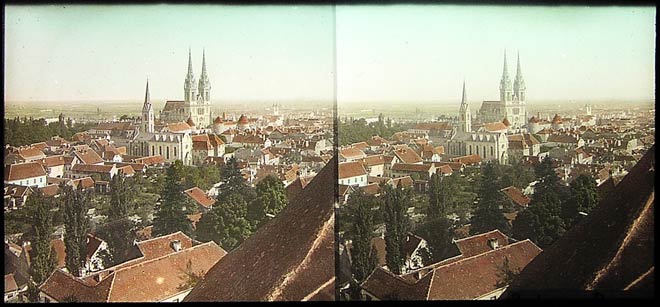

Unlike Kokalj, Alois Beer's stereo pairs show the elegant, aristocratic Zagreb of the historicist era, much more than the new era of the Jugendstil (Art Nouveau). Along with the records of the Green Horseshoe, a most luxurious urban undertaking, he had an eye for the national icons such as the Petar Preradović monument.
The town's heritage architecture was the primary motif in Guteša's stereoscopic photographs. Their quality measures up to his landscape scenes taken around Zagreb and to his portraits in which he occasionally used enriching processes such as bromography. Like Beer, he exhibited his work at photographic shows.
Fleischlinger was the official photographer of military events but his interests also included festive street events such as balloon flights, folklore and exotic events staged on the Sava banks and sports events. In this sense, all four photographers were skilled reporters (recording events in series of five or six photographs taken at short intervals). Fleischlinger's most remarkable work are his colour slides made, after 1907, using the autochrome process. Their artistic value may be compared to the work done by Leo A. Vetter, Milan Klemenčić and Gabrijel Piccoli.
One of the characteristic features of these photographers' work are the self-portraits. They frequently sat for the camera, this silent witness of their profession, and paid homage to the art of photography. Their work is a record of their life and artistic development and, more importantly, a record of the history of Zagreb photography. Their greatest contribution to it is expressed in their realist approach to the motifs.
They all travelled and changed their addresses to catch as much of what was around them as possible and to make it part of their own world. The negatives were copied and multiplied as stereoscopic or conventional albumin photographs and slides of different formats. For financial gain, they sold their work to illustrated magazines.
The emergence of photo-printing shops made postcards widespread and readily available. The introduction of the cinema and a growing number of illustrated magazines put the photographers' work in fierce competition in which they eventually lost.
Slavko Šterk
Pictures from the exhibition




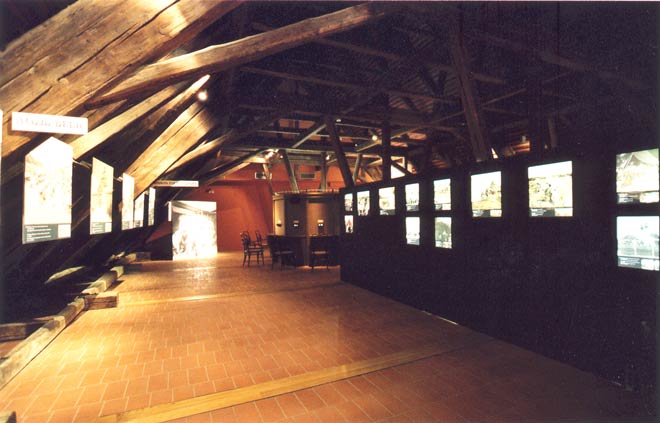
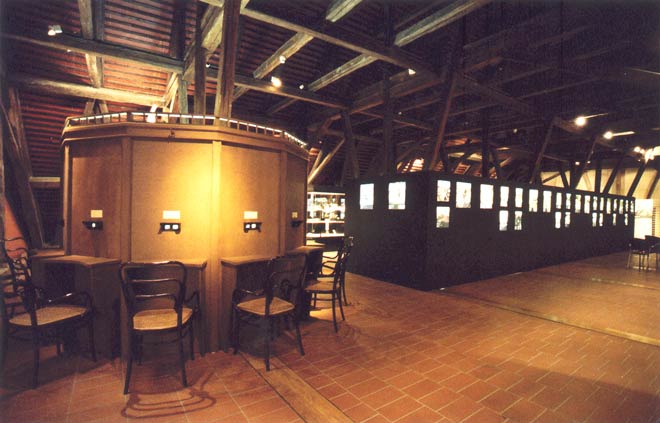
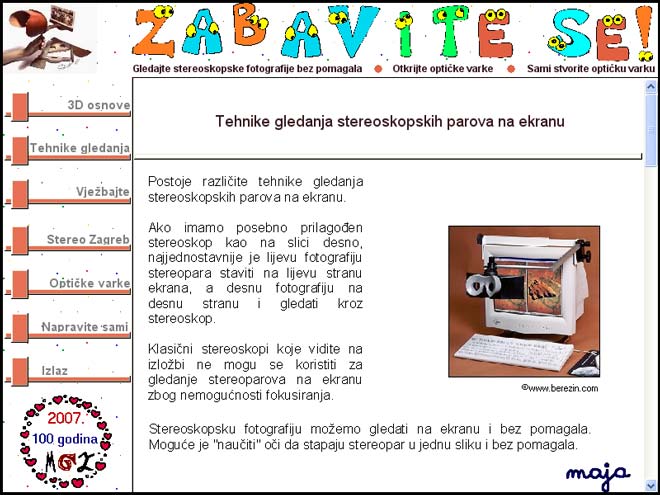
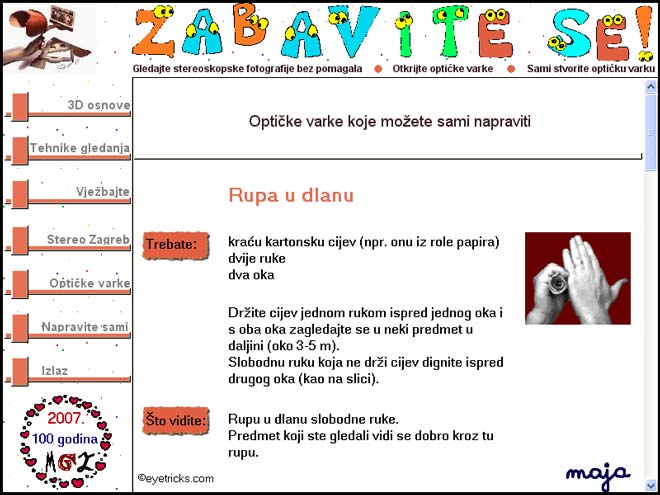
photo Miljenko Gregl, Maja Šojat-Bikić, ZCM
 Exhibition catalogue
Exhibition catalogue
Šterk, Slavko, Stereoscopic Photography at the Turn of the 19th and 20th Centuries from the Holdings of Zagreb City Museum.
Zagreb : Zagreb City Museum, 2002

